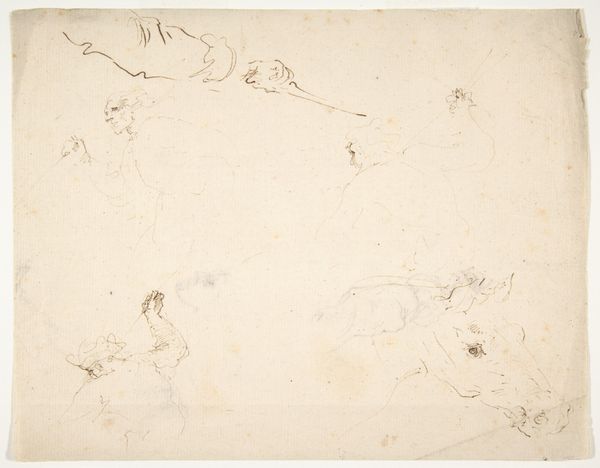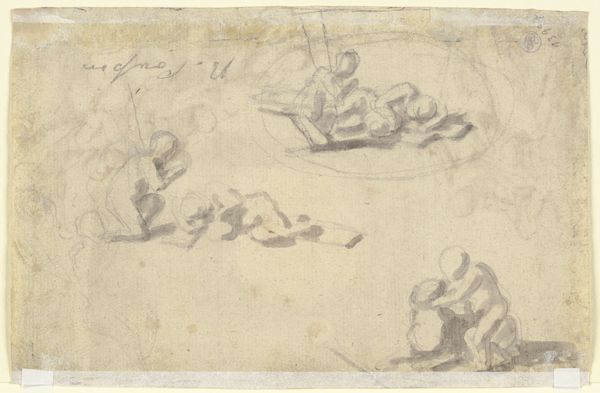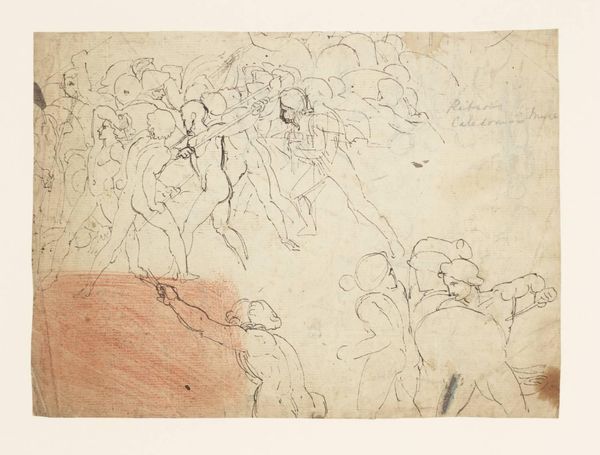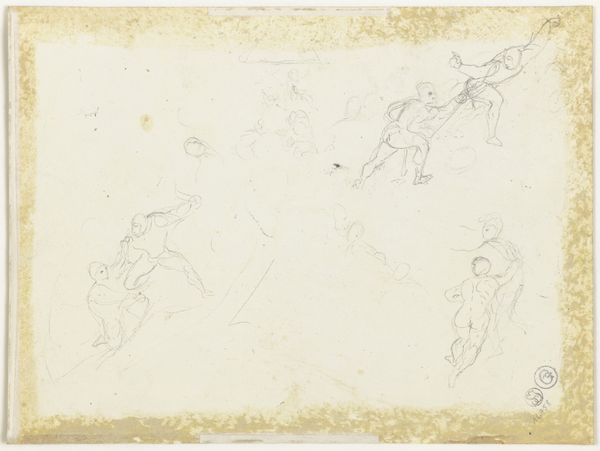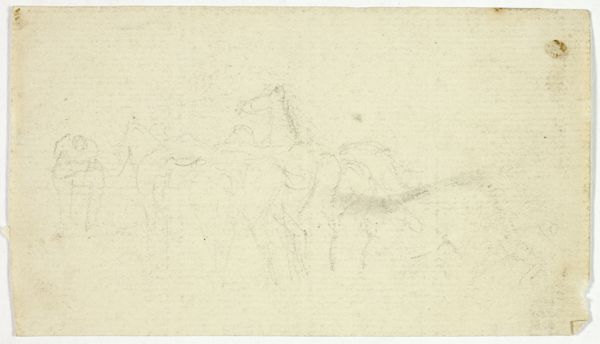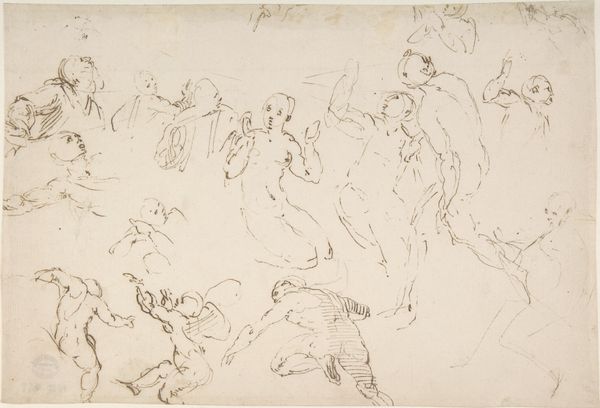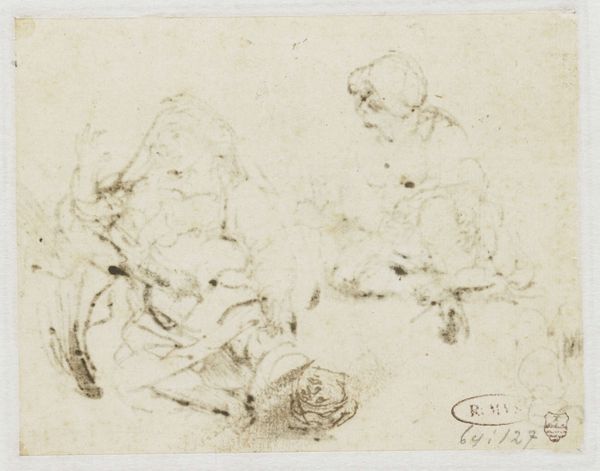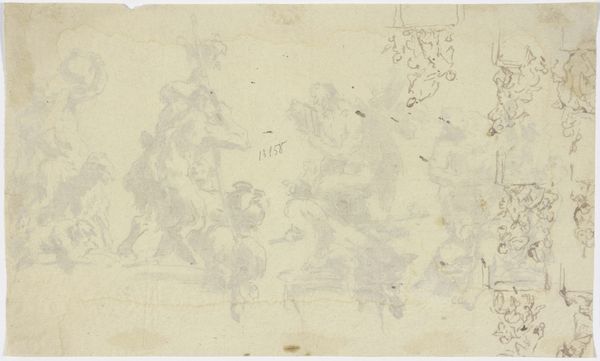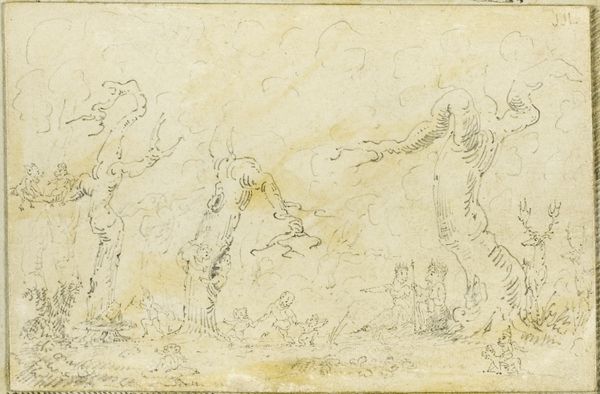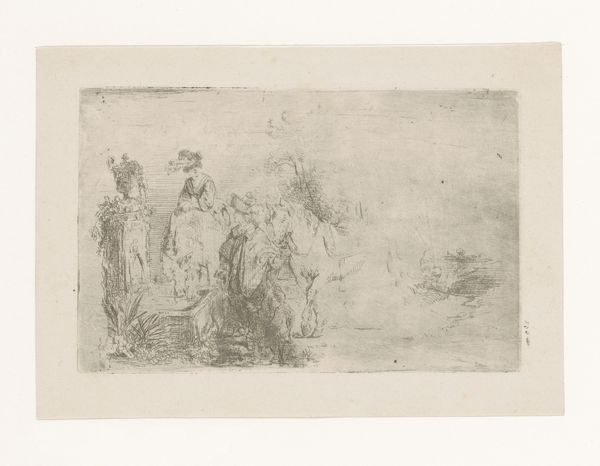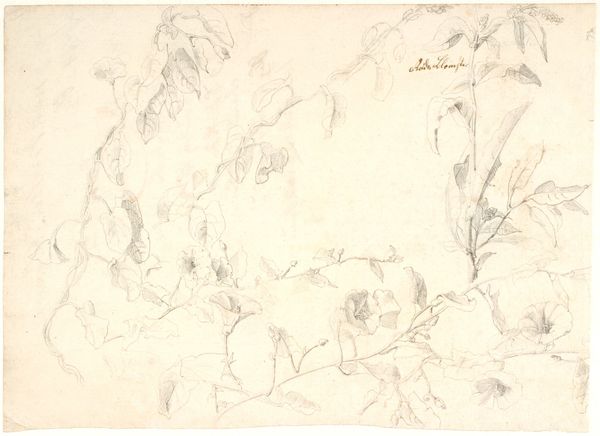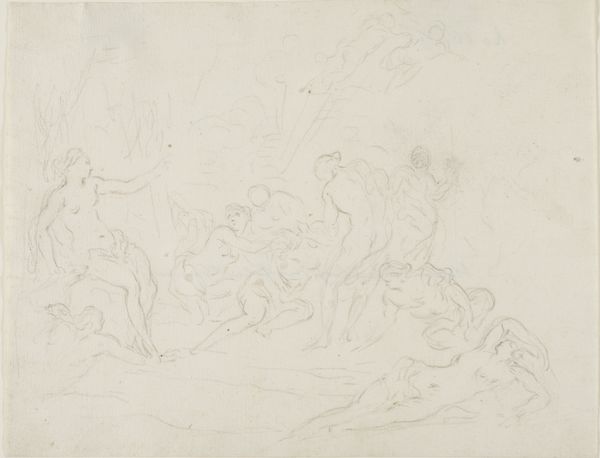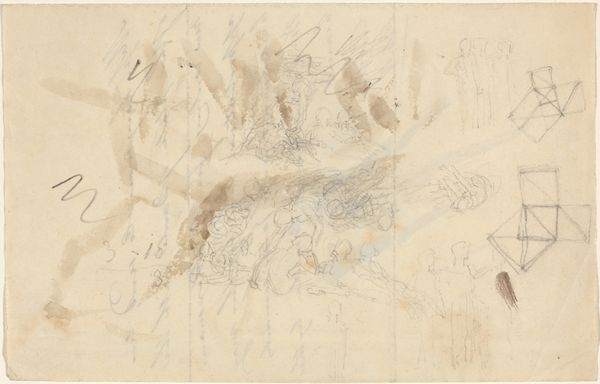
drawing, pencil
#
drawing
#
baroque
#
figuration
#
pencil
#
history-painting
Dimensions: 208 mm (height) x 308 mm (width) (bladmaal)
Curator: Before us, we have "Munks in Glory," a drawing created with pencil between 1637 and 1640 by Massimo Stanzione, and it is held at the SMK, the National Gallery of Denmark. Editor: It’s remarkably light, almost ethereal. A flurry of figures, rendered in the faintest pencil strokes, give it a fleeting, dreamlike quality. Is it unfinished, do you think? Curator: While it presents as light and fleeting to our eye today, the drawing showcases Stanzione’s artistic process of sketching ideas before committing to paint, very typical for a history painter from that time, who made huge narrative altarpieces. The lightness might come from this function more than an artistic decision, I suppose. Editor: The upward direction, though – almost all the figures seem to be looking or gesturing upwards. It certainly evokes a sense of spiritual ascension. Note the recurring motif of the raised hand, as a symbolic gesture here— a reaching for divine contact? Curator: Indeed. Looking closer, you can appreciate how Stanzione uses gesture and movement to communicate a whole Baroque system of beliefs and religious certainties, not only in painted artworks. You can see that this kind of visual rhetoric works, irrespective of scale and material. Editor: And this sketch-like quality only amplifies the sense of movement and fervor. You almost expect the figures to float right off the page. There's something captivating in the raw energy. How do these historical settings influence our reading of the work, especially in today's settings? Curator: Good question! It demands that we understand how public life was shaped in post-reformation Europe. History paintings like these functioned to remind people what civic pride should entail: patronage, honor, and respect towards power, like, for example, monasteries or religious brotherhoods. Art was not made in a bubble back then! Editor: It's compelling to see the seeds of later masterpieces, or even understand artistic mental processes, taking shape here, centuries later, revealing how cultural memory and continuity operates via the pencil and a well-staged representation of power. Curator: Agreed. "Munks in Glory" demonstrates how preliminary sketches such as this are not merely preparatory exercises. They're fascinating, historical windows that let us access a crucial stage in Baroque art. Editor: A powerful, evocative reminder of how symbolism and social power intertwine and traverse time, even within a sketch.
Comments
No comments
Be the first to comment and join the conversation on the ultimate creative platform.
